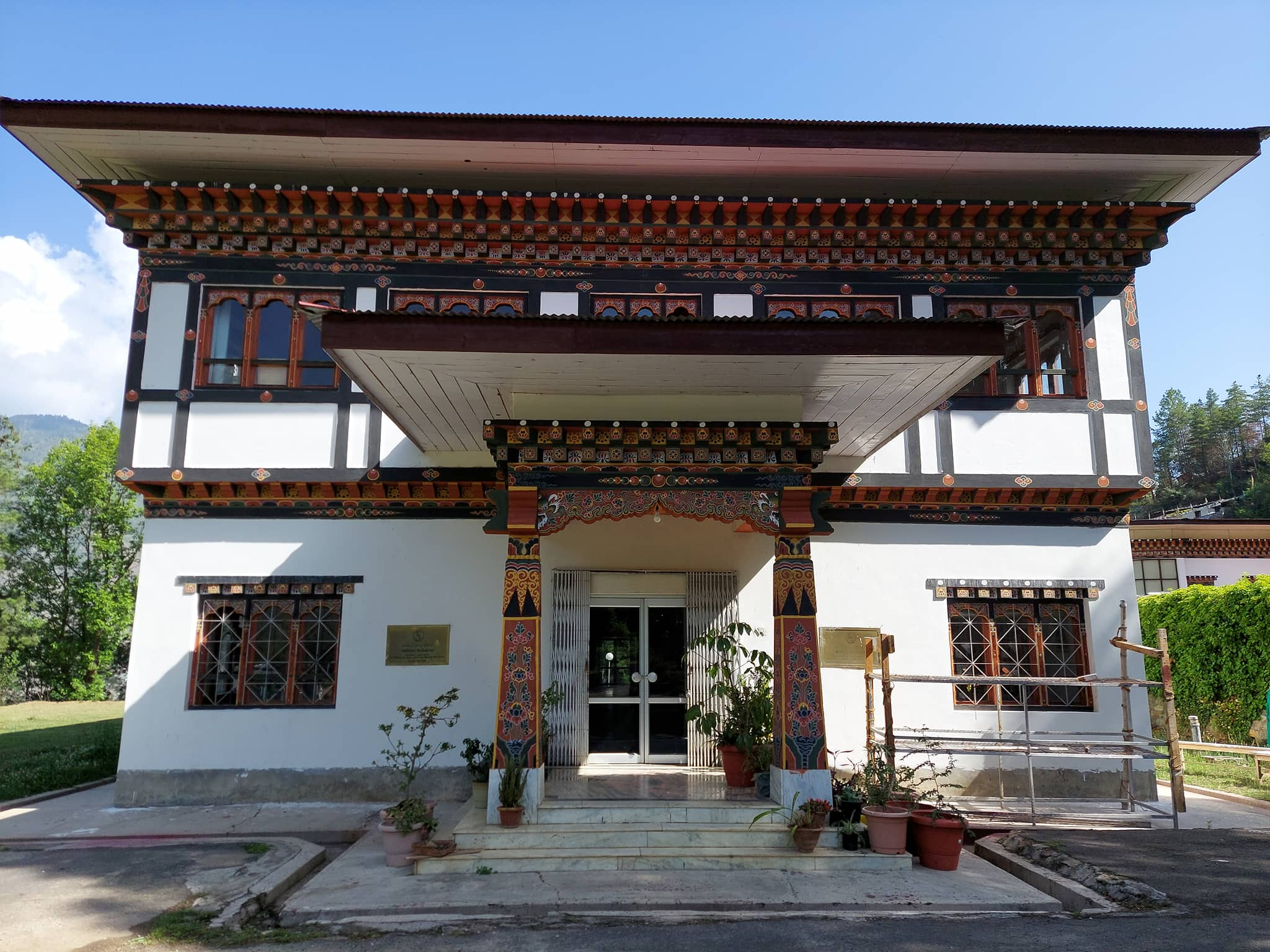Bhutan National Herbarium (THIM)

The need for a herbarium in the country was recognized by implementing the nationally significant Flora of Bhutan project in the early 1970s when major botanical collections and expeditions were initiated. The key achievements of the flora project are collections of representative herbarium specimens and the commencement of publications on the Flora of Bhutan. The specimens collected were mainly deposited at the renowned international herbaria of the Royal Botanic Garden Edinburgh, the Royal Botanic Garden Kew, the British Museum (Natural History), Tokyo University, and the Indian Botanic Garden. However, the duplicates were retained in the herbarium under the then Department of Forests. Later in 1987, the herbarium was shifted to the Forestry Research Centre at Taba. However, several specimens deteriorated due to a lack of proper storage facilities.
Finally, it was moved to the present location at Serbithang under the National Biodiversity Centre. In 1998, the “National Herbarium and Flora of Bhutan project” were initiated with financial support from DANIDA. The National Herbarium was established and the publication of three volumes comprising nine books on the Flora of Bhutan was completed. In 2003, the National Herbarium became operational with basic facilities, and the Flora of Bhutan publications was conducted with financial support from DANIDA. In addition, capacity was built in the fields of botany, taxonomy, and herbarium techniques, and national and international collaborations were developed.
The collection of representative specimens was prioritized to strengthen explorations, collections, and documentation of the floristic diversity in the country through several botanical projects namely the:
- Bhutan Fern project was implemented during the 9th FYP and resulted in a collection of 2539 specimens. A checklist of 411 species was published.
- Pilot project on invasive plant species of Bhutan was implemented in 2008-2009 with funding support under the framework of the Program for SouthSouth Cooperation (PSC) between Benin, Bhutan, and Costa Rica.
- Comprehensive assessment of climate change impacts on endemic plant diversity along the bio-geographic elevation gradients in four eco-floristic zones in Bhutan with funding support from the BTFEC from 2012-2015.
- Impact assessment of invasive plants in Bhutan was conducted as one of the project components under the EU-GCCA project.
- Red listing of Bhutan’s Endemic Plant Species was implemented from 2014-2015, in collaboration with the Biodiversity Network Japan (BDNJ) with financial support from Toyota Motors, Japan, and technical support from IUCN.
- Biodiversity conservation and sustainable use in HANAs (High Altitude Northern Areas of Bhutan) was implemented from 2015-2017 through funding support from the BTFEC.
- Serve as the national botanical repository and reference centre.
- Strengthen botanical information and knowledge base through exploration, collection, and documentation of plant diversity in the country and digitization of collections.
- Provide plant taxonomic facilities, training, and services for proper identification and botanical research.
- Coordinate plant taxonomy and floristic research and identify conservation priority species in the country.
- Promote regional and international linkages for collaborative work in the fields of botany and taxonomy.
Currently, the National Herbarium houses over 20,000 specimens mostly of vascular plants classified according to the Engler and Prantl system of classification. The collections include angiosperms, gymnosperms, pteridophytes (ferns and allies), and bryophytes (mosses and liverworts) of Bhutan.
Facilities and capacity for herbarium techniques were established with international standards. The program also provided technical support and basic facilities for the establishment of four field herbaria in the protected areas of Sakteng Wildlife Sanctuary (Tashigang), Bumdeling Wildlife Sanctuary (Trashiyangtse), Wangchuck Centennial National Park (Bumthang), and Jigme Dorji National Park (Gasa) through financial support from the BTFEC. In addition to the Flora of Bhutan, the Checklist of Bhutanese Ferns – Pteridophytes of Bhutan (2009), the handbook on the Plants Endemic to Bhutan Himalaya (2015), and the checklist of the HANAs flora – Alpine Plants of Bhutan Himalaya (2017) were published. Four plant species new to science namely, Meconopsis gakyidiana (revision and up-gradation of National Flower to species level), M. merakenis, M. elongata and Roscoea megalantha were discovered and described.





We are open to the visitors but visitors must inform in advance by contacting the staffs.

